From Calais we head south: first stop, Cambrai. A truly northern French town. Pockmarks of shrapnel still scar the walls of those buildings that survived the onslaught of two World Wars. Yet Cambrai has a feeling of solidity and permanence, its name forever enshrined in the word ‘cambric’, marking the time when the weaving of linen, and later cotton, was its main industry. The town stands in the midst of a prairie of grain and sugar beet where, to this day, the land still yields grisly mementoes of the killing fields that they once were. With such a past, it is not surprising that many visitors to the town have a particular interest in military history or have come to pay tribute to those who fought and are buried here. Happily, Cambrai still retains something of its historic association with the weaving trade, witness the several factories in the area that continue to manufacture all manner of linens for the home and, usefully, with factory shop outlets attached. As for the former battleground, fields of wheat continue to provide the means to make the region’s daily bread and Cambrai has any number of boulangers who still bake their signature loaves in the traditional wood-fired bread oven. I really like this town, especially its friendly inhabitants and great northern cuisine. We always stop overnight here at the wonderfully idiosyncratic Hotel Beatus – welcoming, comfortable, restful and with the best restaurant in town.

I have another reason for wanting to visit Cambrai before we head on down the autoroute towards Champagne: Tarte Maroilles. I know I can buy these tarts from the cheese shop in town. Indeed they can even be found in the supermarkets hereabouts, supplied ready-made from local artisanal sources. The cheese from Maroilles is one of the great cheeses of France, though little known outside of these northern regions. It doesn’t travel well and is exceedingly smelly – even more so than most! It is also delicious and produced by many of the local dairy farms and cheesemakers in the area. It is known to have been made from as early as the 10th century by the Benedictine monks at the abbey which once flourished close to the village of Maroilles. This is a region that provides the perfect conditions for its fabrication: a prevailing westerly wind bringing humidity to the air, a rich soil that produces lush grasses; these in turn provide the basis for the full-flavoured, creamy cow’s milk from which the cheese is made. The tart was made originally by the farmers’ wives as a way of using surplus cheese and is now a ubiquitous savoury treat, renowned in its own right and not to be missed whenever one visits.
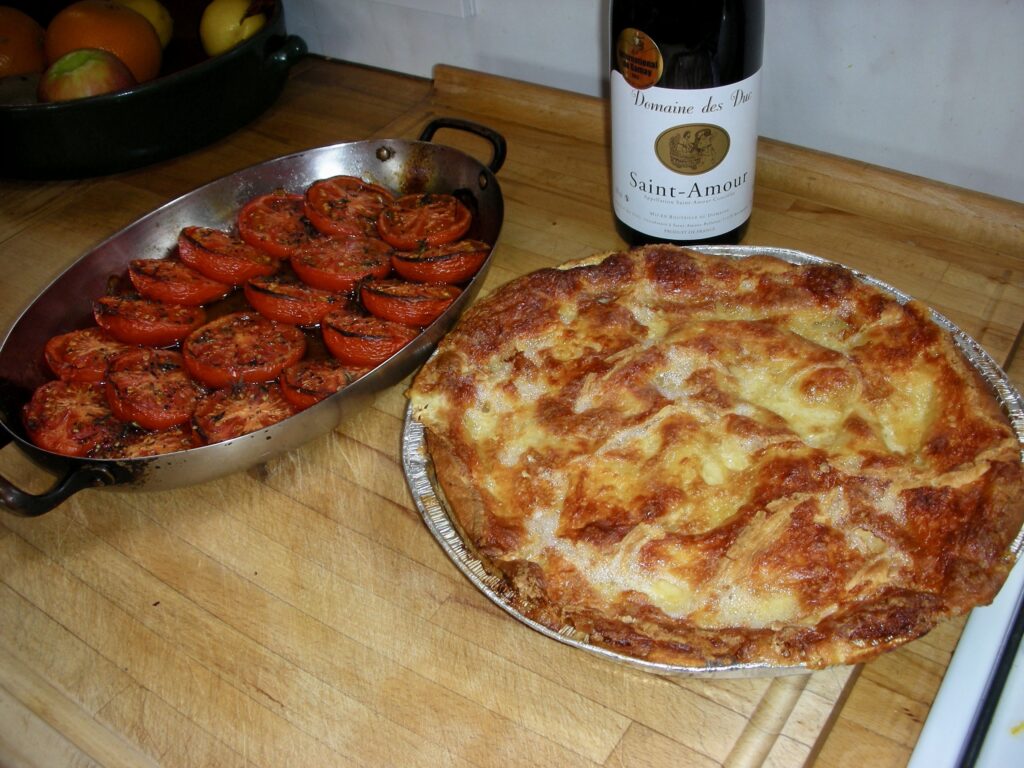
The tart has a slightly yeasty base, a little like a pizza in consistency. It was once baked in wood fired ovens after the main bread baking was done and the ovens were still hot and was a good way of using up any excess bread dough. Thin slices of cheese cover the bread base and, once baked, its topping becomes a crisp and golden crust with a layer of goo-ily melted cheese beneath. If you dress it up a bit, for instance, by serving it with a dish of roasted tomatoes in the winter or a salad of ripe tomatoes in the summer, preceded by a tasty soup and followed by a light dessert, one has the makings of a quick and easy but memorable lunch for a few friends. Hence my reason for stopping off in Cambrai to buy some. They come vacuum packed and once I get home I shove the several I have bought into the freezer in happy anticipation of just such an event at a later date.
Purchases made, we continue on our way. The plan is to get to the village of Aÿ in Champagne before midday. It is in Aÿ that we find our favourite champagne – bought from the family Goutorbe. We came here regularly, for many years, often stopping for weeks on end with our motorbarge, mooring close-by somewhere on the Canal Marne au Rhin or on the River Marne itself, relishing our time spent visiting local growers and sampling their wares. Eventually, after much tasting and testing, we have fetched up with the champagne of Henri Goutorbe; it exactly matches our needs and fulfils all requirements. This became our chosen wine of the region, one that we would lay down, pride of place, in the cool bilges of our barge. Still today, though the barge is long since sold, we regularly stop off at Aÿ on our way down to Burgundy. The Goutorbe family continue to make exceptional champagnes and always have a good range of different vintages and blends of the three grape varieties – Pinot Noir, Chardonnay and Pinot Meunier, for us to try. We enjoy the small tasting ceremony held in the foyer of the office, seated at a small table, our champagne glasses served on a tray painted with flowers. The tasting creates a happy break in the long haul down to our ‘hovel’ further south, even though we already know which champagnes we will probably buy. For everyday quaffing it’s their Cuvée tradition (17.50 euros) and for high days etc., the Cuvée Blanc de Noirs (34 euros) and I must admit to being particularly partial to their slightly decadent Cuvée Rosé (28 euros).
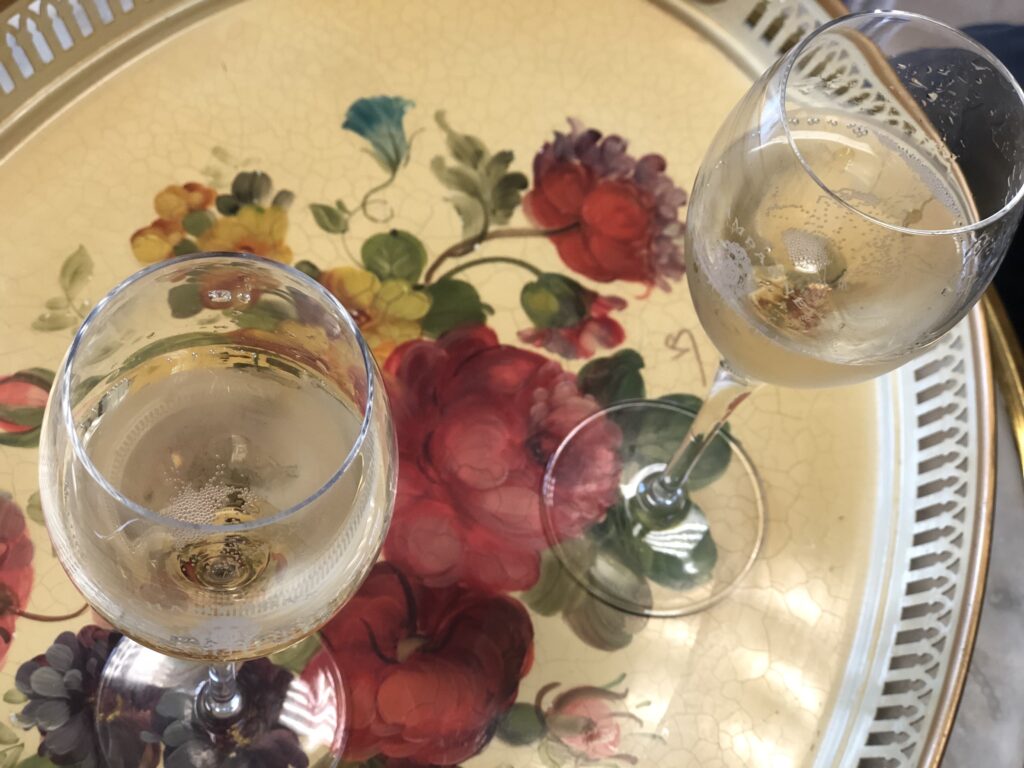
I chat with one of the family in the office. She remembers us from when we used to come to Aÿ on the boat, ‘ah oui, sur la péniche’, she exclaims, making a connection because Monsieur Goutorbe’s grandfather had originally been a batellier – a ‘bargee’, and regularly travelled down the Marne to Paris, his boat loaded with barrels of wine from the region. As he is now well into his 70’s I reckon that Monsieur Goutorbe’s granddad would have been a boatman somewhere around the turn of the 20th century and during the time of phylloxera when the vines were decimated and the land had become virtually worthless. I wondered if that was when this bargeman ancestor had left the water and bought the land. I only really think about this later and make a mental note to ask her, next time, about that part of the Goutorbe family history.
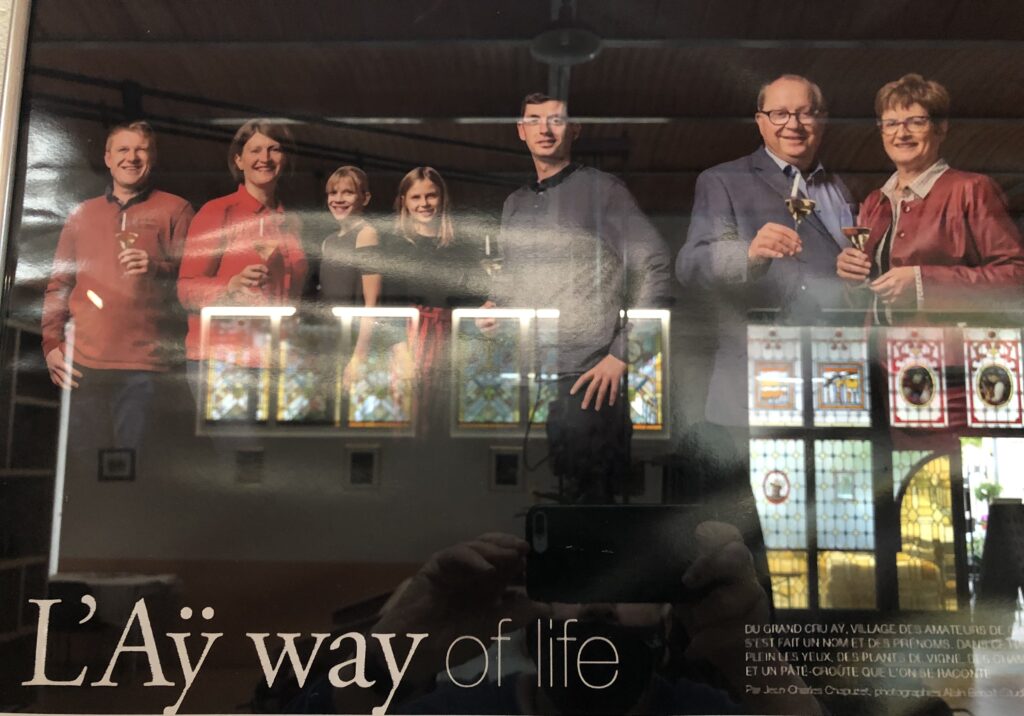
The vineyards of Champagne are the most northerly of the lands where grapes will grow in France and has the feel of the north rather than the south. I tell Madame that we had stopped off in Cambrai to buy some Maroilles cheese tarts. Her face lights up as she tells me that this is the tart they always serve to the grape-pickers at the supper that marks the end of the vendange – the grape picking. She says that for the Goutorbes, it is a long-standing tradition: those original pickers, right up until the time of the 2nd WW, came from Belgium and the Nor-Pas-de-Calais regions. They always brought the cheese of Maroilles with them. The making and eating of Tarte Maroilles marked the end of the harvest. She said the practice persists to this day and it is always served at the Goutorbe supper. I loved making this connection between them and us and that something that linked us all to the past.
Thus is history made, remembered, and the stories handed on.
For those unlikely to visit northern France any time soon I have included here a pretty authentic recipe for the Maroilles cheese tart. The cheese itself can be bought in the UK online from:
https://cheesehub.com/maroilles/
And Henri Goutorbe has a lovely new website that covers all the vital stats including the ordering of his champagnes:
www.champagne-henri-goutorbe.com
Tarte Maroilles
The dough contains yeast which gives it a lightness and a slightly bread-y quality. Try to obtain fresh yeast and bear in mind that, as with bread, the dough will need to rest for at least 1½ hours when you are making it.
Ingredients
250g dough
250g Maroilles cheese
1-2 tbs thick creme fraiche
Some pepper
Dough base
5g fresh baker’s yeast
75g warm water (30C max.)
Good pinch of caster sugar
250g bread flour
3 eggs (medium at room temp lightly beaten)
Good pinch sea salt
50g melted butter
Begin by mixing the yeast with the sugar in the warm water.
Separately, in a large bowl, mix the flour and salt. Make a well in the centre and pour in the beaten eggs and the yeast water.
Start mixing from the centre (either by hand or with a spatula) incorporating the flour from the edges into the liquid centre. Once well mixed bat and pound the dough vigorously for 10 – 15 minutes to incorporate as much air as possible. Now add the melted butter and stir it briskly into the dough. The dough should be very soft – almost runny.
Butter and flour a dish. Measure off 250g of the dough and pour it into the dish. Sprinkle the dough with flour because it will be very sticky. With the palm of the hand spread the dough over the base of the dish to a depth of about 5cm.
Maroilles cheese is made in squares. The rind is a rusty brown colour and quite strongly flavoured. Cut off the rind at one end of the square then proceed to slice the rest thinly, including the surrounding rind, until you have prepared 250g.
Cover the dough with cheese and then brush the cream over the cheese. Finish with a good grinding of black pepper.
Leave to stand in a clean, cool, draught-free place for around an 1 -1½ hours
Preheat oven to 200C
Bake in the oven for 15 – 20 minutes . The dough will swell and the cheese on top will become golden brown.
Serve warm with a green salad or a dish of roasted tomatoes (or both).
My Suggestion for an easy laid back lunch:
Summer
Cold cucumber and sorrel soup
Tarte Maroilles with tomato salad
Strawberries and cream
Winter
Roasted butternut squash and garlic soup
Tarte Maroilles, roasted tomatoes, green salad
My rice pud
Keeping to the spirit of things an apero of champagne would not go amiss here.
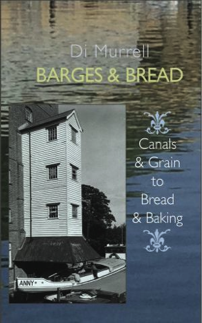
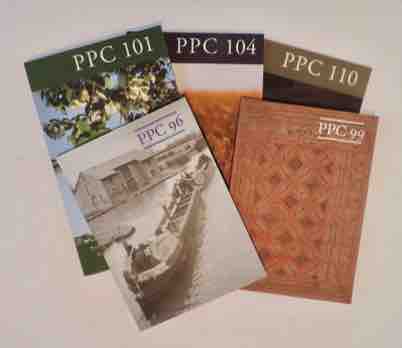
An excellent first (proper) post. Hopefully there will be more to follow 😉
Hello Di,
Glad to read your blog all the recipes and wine notes again.
Hope you are both keping well and enjoyong your times.
If you see this in time please wish Tam a happy birthday.
Best wishes
Barry